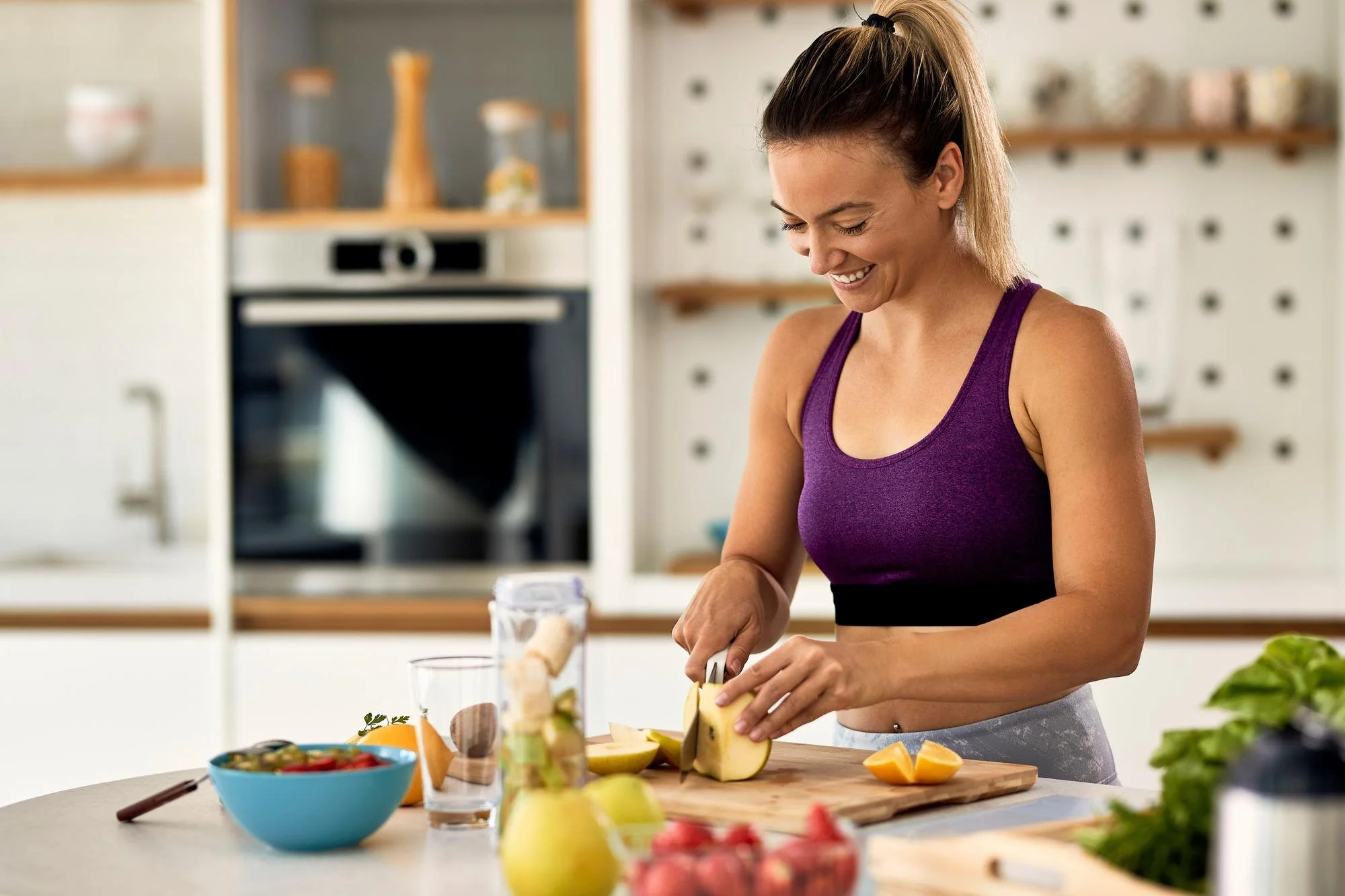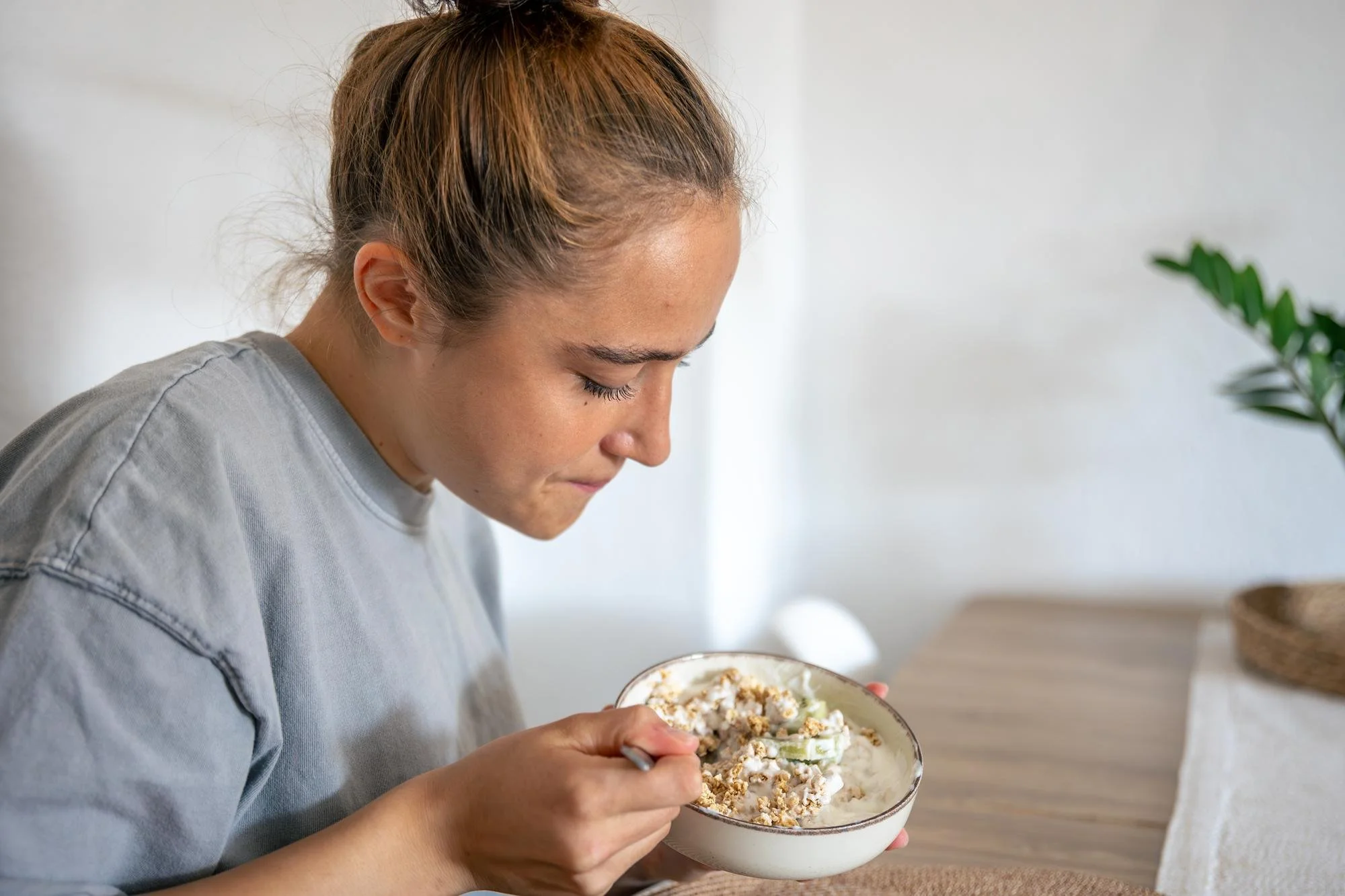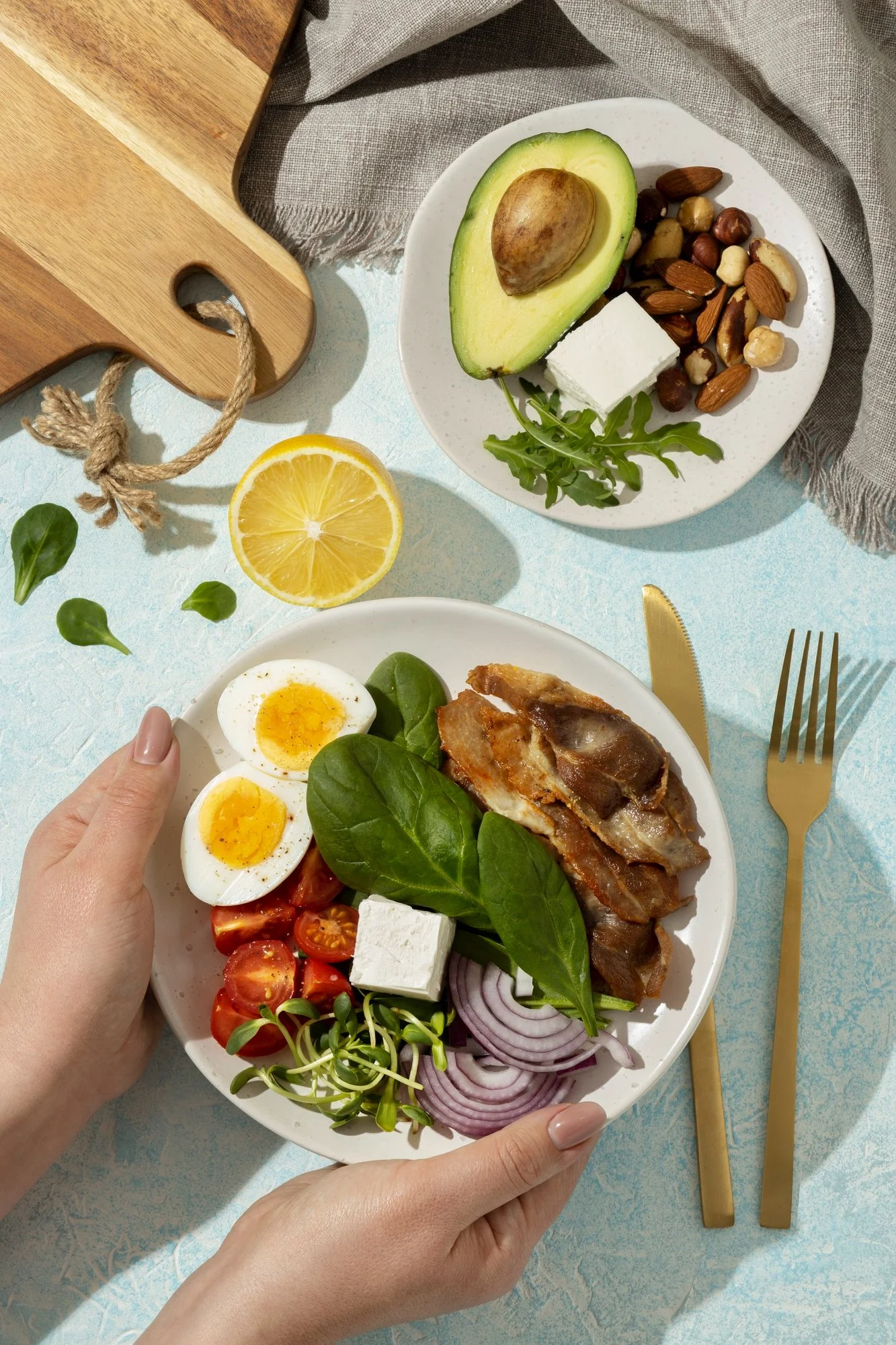
How to Build a High-Performance Plate Without Counting a Single Calorie
If your goal is strength, energy, and consistency, you don’t need a calculator. You need a system.
Calorie tracking has its place, but most busy people don’t have the time or the patience to log every meal. When nutrition starts to feel like a second job, consistency disappears.
The solution is simple: build plates that perform. Here’s how we coach clients to create balance without weighing, measuring, or obsessing.
1. Use Your Hands as a Guide
Forget the scales. Use the one tool you always have with you: your hands.
Palm = Protein (1 to 2 palms per meal)
Fist = Vegetables (at least 1 fist, often more)
Cupped hand = Carbs (1 to 2 depending on activity level)
Thumb = Fats (1 to 2, especially when carbs are lower)
This method works anywhere. If you are out at a restaurant, on a work lunch, or grabbing a quick café meal, you can scan the plate and balance it without overthinking. Your hands scale to your body, so it is already personalised.
2. Match Food to Output, Not Emotion
Most people eat based on stress, mood, or convenience. High performers need to flip that: eat based on output.
Training days: more carbs, lower fats, steady protein
Rest days: moderate carbs, slightly higher fats
Stressful days: maintain protein, avoid excess sugar
Busy days: keep meals simple, don’t skip them
This approach keeps your energy stable, your head clear, and your recovery on track.
Example: On a heavy training day, a plate might look like salmon, rice, and roasted vegetables. On a rest day, the same salmon could be paired with avocado and greens instead of rice. Same protein, different balance.
3. Prioritise Food Quality
Macros matter, but food quality makes the difference between looking good and feeling great.
Swap powders for real food where you can - chicken, fish, eggs, or lean beef.
Choose carbs with fibre such as rice, oats, potatoes, or fruit.
Rotate vegetables for digestion and micronutrients.
Use fats for function: olive oil, avocado, nuts, eggs, fatty fish.
The cleaner the base of your diet, the easier it is to stay consistent when life gets busy.
4. Focus on Routine, Not Perfection
You don’t need to eat perfectly every day. What matters is that most of your meals, 80 to 90 percent follow a repeatable pattern that supports your training and lifestyle.
Here’s a simple structure that works for almost anyone:
Meal 1: Protein, fats, and fibre (eggs, avocado, greens)
Meal 2: Protein, carbs, and colour (chicken, rice, salad)
Meal 3: Post-training focus (steak, potato, greens)
Snack: Protein-based (Greek yogurt with berries, or a shake if needed)
Repeat this framework with small variations and you have a system that fuels performance without the stress of strict meal plans.
You don’t need a new diet. You need a plate that performs.
When you build meals this way, they scale with your goals, adjust to your lifestyle, and keep you fuelled without draining your focus. Simple, flexible, effective.


